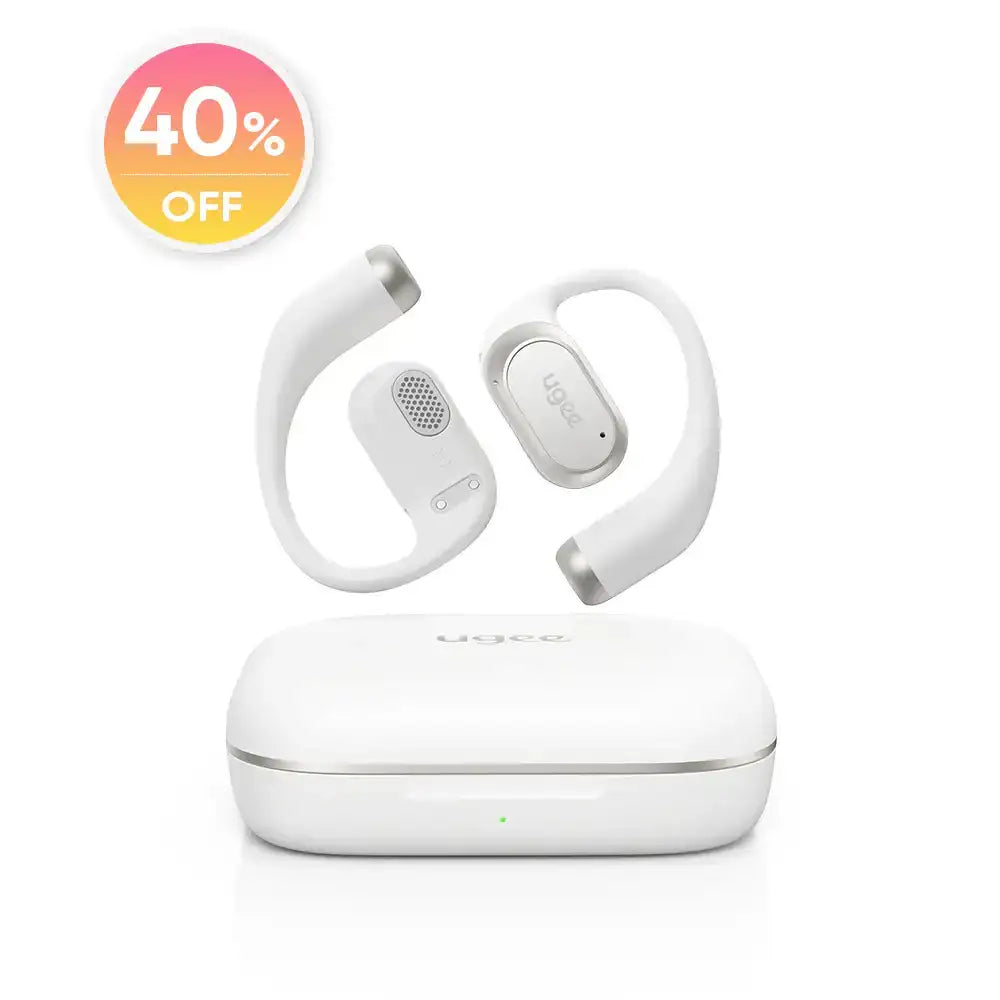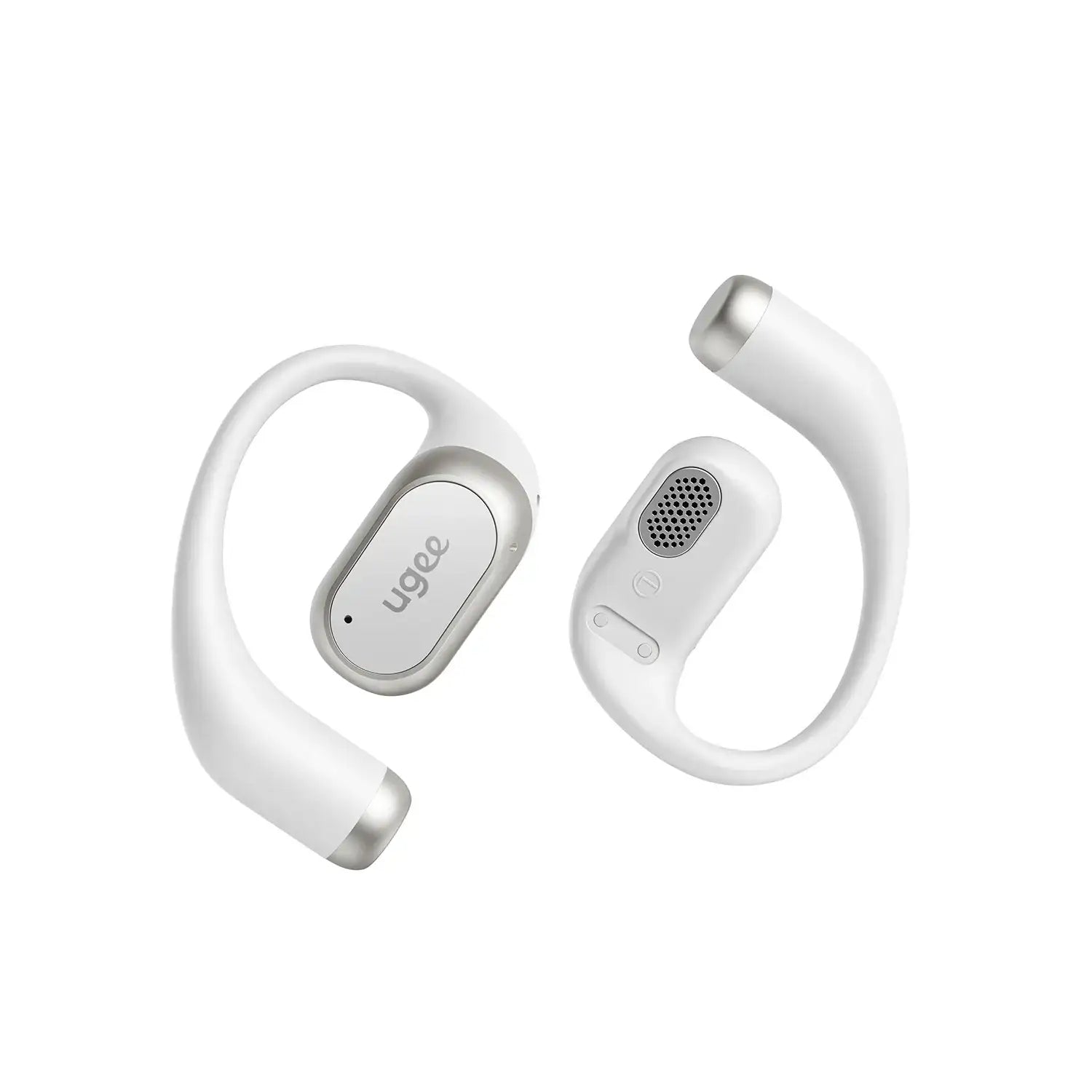In this guide, we'll answer these questions, compare open ear earbuds vs. traditional earbuds, and help you decide which style suits you best.
Part 1: What Does "Open-Ear" Mean in Earphones?
Open-ear earphones transmit audio through air conduction or bone conduction instead of the traditional method, where earbuds are directly placed into your ear canal. Open-ear headphones keep you connected to your surroundings, making them a popular choice for people who enjoy outdoor activities.
ugee has also found that open-ear earbuds can help creators boost their creativity while drawing. It might be hard to believe, but it's true - listening to music or an audiobook can create an immersive environment, allowing artists to become more engaged in their imagination and creativity.
With open-ear earbuds, you can hear ambient sounds and easily follow conversations without needing to take them off. Say goodbye to the inconvenience of removing your earbuds every time someone talks to you.
In conclusion, open-ear earbuds or headphones allow you to enjoy audio in a more transparent, comfortable way.
Part 2: Open Ear vs. Semi-Open Ear vs. In-Ear vs. Over Ear
1) Open Ear:
Open-ear earbuds sit outside your ear canal, allowing you to stay aware of your surroundings.
2) Semi-Open Ear:
Semi-open-ear earbuds, like AirPods 4, rest in your ears but do not have rubber tips. They let some ambient sounds in while offering a comfortable, less invasive fit.
3) In Ear:
In-ear earbuds have rubber tips that form a tight seal within your ear canal. They provide strong bass and clear audio, but may become uncomfortable during extended use.
4) Over-Ear:
Over-ear headphones completely cover your ears. They typically provide the highest audio fidelity and passive noise isolation. There are two main varieties, over-ear and on-ear, depending on whether the ear cups surround or rest directly on your ears.
| Open Ear | Semi-Open Ear | In Ear | Over Ear | |
|---|---|---|---|---|
| Fit | Outside ear, no seal | Partially in, no rubber tip | Inside, a tight seal | Completely covers ears |
| Sound Quality | Open, airy, less bass | Balanced, natural, some isolation | Clear, strong bass, limited stage | Superb, rich, wide soundstage |
| Noise Isolation | Low, ambient sounds present | Moderate | High | High (passive + ANC) |
| Comfort | Very comfortable, no pressure | Comfortable, well-ventilated | Can cause discomfort, fit-dependent | Comfortable, but may become warm |
| Portability | Moderate | Moderate | Very portable | Bulky, less portable |
| Health Considerations | Lower risk of infections, less pressure | Moderate | May cause discomfort, infection, or damage if worn for a long time | Lower risk of infections, less pressure |
| Situational Awareness | High - you can hear the surroundings | Medium | Low | Low |
| Use Case | Outdoor activities, casual listening | Home or studio, casual use | Commuting, fitness, and daily use | Home listening, audio production, and audiophiles |
Part 3: Key Point - Are Open-Ear Earbuds Better for Your Ears?
It depends. There's no universal "right" or "wrong" when choosing a pair of earbuds - it largely depends on your preferences and lifestyle.
Pros:
✅ Hygienic: Open-ear earbuds do not block your ear canal, reducing the risk of wax build-up.
✅ Portable: Mainstream open-ear designs are lightweight and convenient for daily use.
Cons:
❌ Higher Volume Risk: Because they allow ambient sounds in, you may be tempted to raise the volume in noisy environments, which can damage your hearing over time.
❌ Sound Leakage: Some people nearby may be able to hear your audio, especially at volumes above 60%.
Recommendations for Safe Listening with Open-Ear Earbuds
To enjoy the benefits of open-ear earbuds while protecting your hearing, consider these health expert recommendations:
✅ Be Mindful of Volume: If you need to raise your voice to be heard by someone an arm's length away, the volume is likely too high.
✅ Follow the 60/60 Rule: Try to keep the volume at or below 60% of maximum and limit listening sessions to 60 minutes at a time.
✅ Utilize Volume Limiters: Many smartphones allow you to set maximum volume limits to avoid accidental overexposure.
✅ Take Listening Breaks: Give your ears a rest after extended sessions.
✅ Be Cautious in Noisy Environments: If you're in a noisy place, consider reducing your listening time or using closed, in-ear headphones instead of turning up the volume.
FAQs
How does open-ear compare to in-ear for sound Leakage and privacy?
Open-ear lets more ambient sounds in and may leak some audio, while in-ear provides greater isolation and discretion.
How do in-ear headphones affect hearing health during long sessions?
Prolonged use at high volumes can harm your hearing. It's recommended to follow the 60/60 rule and take breaks regularly.
Which style offers the best balance of portability and audio quality for tablets and smartphones?
In-ear or semi-open-ear earbuds typically provide a convenient balance of portability, audio, and awareness.
Conclusion
Open-ear earbuds aren't necessarily "bad" for your ears - in many cases, their less invasive design can be more comfortable and hygienic. They're a great choice for outdoor activities and casual listening. However, it's crucial to keep the volume at a reasonable level and to use them in a relatively quiet environment.
If you're frequently in noisy surroundings or need deep audio immersion, closed-in-ear headphones might be a better match. Whatever you choose, protecting your hearing should be a top priority - listening responsibly makes all the difference.








Share:
What Is Transparency Mode on Earbuds?
Are Over the Ear Headphones Better for Your Ears?